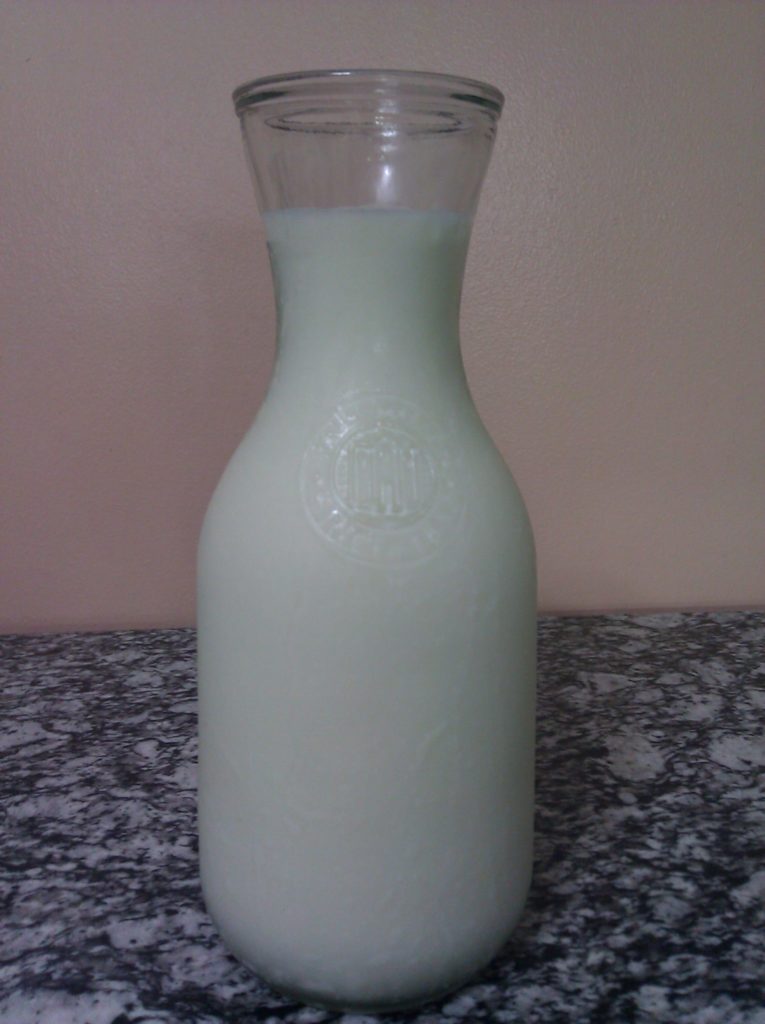
One of the most exciting things that has happened with this blog over the past year is a large increase in the international readership. This is exciting to me as they bring a unique perspective to the discussion, contribute suggestions and ask questions that those of us living in the United States have perhaps never considered before.
One question that I’ve been getting recently, particularly from readers in India and Eastern Europe, is how to consume raw dairy safely when the cleanliness of the source is questionable.
People in these countries typically boil their raw milk first before drinking. However, the information they were reading on this blog and elsewhere about the health benefits of raw milk had prompted them to reconsider this practice. They wanted to start consuming fresh dairy in order to enjoy the significantly improved nutritional profile of milk that has been completely unheated.
What to do in this situation? I put this question to Tim Wightman, President of the Farm to Consumer Foundation and grassbased farmer extraordinaire to see what he had to say.
Three Methods for Ensuring Raw Milk Quality
If you are unsure of your raw milk source or are using it for the first time and are not yet 100% comfortable with your decision, try one or all of these methods to set your mind at ease:
- Buy only small amounts of raw milk at a time and use up within one to three days. Bacteria that cause food borne illness with the exception of Campylobactor require more than a few days to develop in the quantities necessary to cause human illness.
- Make homemade (unheated) kefir with the raw milk before consuming. If the milk is of questionable quality, the kefir won’t set right and the end result will be whey and milk solids or a very runny kefir that won’t be desirable for consumption.
- Probably the best way to drink raw milk and have peace of mind even if you are not completely sure of the cleanliness of your source is to freeze the milk for two weeks first before thawing and then drinking. Food or drink frozen for that period of time is considered safe to consume. As a bonus, raw milk that is frozen and thawed that ends up quite close to its original form with only just a few very small milk solids floating around is a good indication of quality milk.
Sarah, The Healthy Home Economist








Sarah,
I have been getting raw milk from a family that has only 2 jersey cows that they milk for their family of 6. Raw milk is illegally to sell in our state. I don’t think the cows graze on pasture a lot but the milk is good tasting. I haven’t a problem and I am immune suppresses from a transplant but after reading the comments, I dont know whether I should continue drinking this milk or not. I want raw milk but not at the expense of major illness. Is it worth the risk to drink raw for the benefits even if you don’t know if they are just being fed grains. I am confused!
If u r in the LA/OC area and would like goat yogurt/kefir visit Jimsrawyogurt.org or message me for more info. Super thick, best tasting yogurt I’ve ever had! Not ‘goaty’ either. yum!
How to Drink Raw Milk Even When Unsure of Your Source – The Healthy Home Economist http://t.co/eZGAM4mI
BE FOREWARNED! You most likely WILL become a milk drinker. I had forgotten how GOOD brownies with milk could be.
Great tips if you’re squeamish about drinking raw milk!… http://t.co/DQn8Jpu0
Raw milk to help kill things I would think it needs to freeze immediately from udder. So they should buy already frozen, rather then buy fresh, don’t know the age of it allowing things to grow and then freeze? Any expert clarification on this?
When kefir separates, just blend it and it will be fine again.
By the way, the kefir link in this post points to a caesarean post.
This is a great post! I definitely learned some things I didn’t know. I do disagree with one thing mentioned, though. I brew my own milk kefir from our own goat milk. Depending on how much milk I add, the kefir generally DOES separate, and I just mix it back together. To me, that is a sign that it has thoroughly fermented. I don’t know this to be the case, but I suspect that putting kefir grains into raw milk and leaving them at room temperature for 24 hours would kill off anything bad that is living in there. I have a piece of cheese in the fridge that I made 2 years ago, using kefir as the culture. I waxed it in several smaller pieces, and over time have opened them up. It made nice cheese, but they do not get more sharp with time. They stay the same! This leads me to believe that kefir is very powerful in taking over the microscopic landscape. I am glad to know about the freezing and how to thaw the milk without separation. Thank you!!!! And happy new year!
wishing you a blessed and happy new year! thanks for the article. by the way my kefir when prepared separates some times. ive been making it into a smoothie with honey and a ripe banana.but i find it ok. i need to try freezing the milk.ive been consuming raw milk for more than 3months now and living in India where the conditions are pretty unheard of (especially where raw milk is concerned) I get by. wishing you all the best!
How to Drink Raw Milk Even When Unsure of Your Source http://t.co/T6SSEfEA